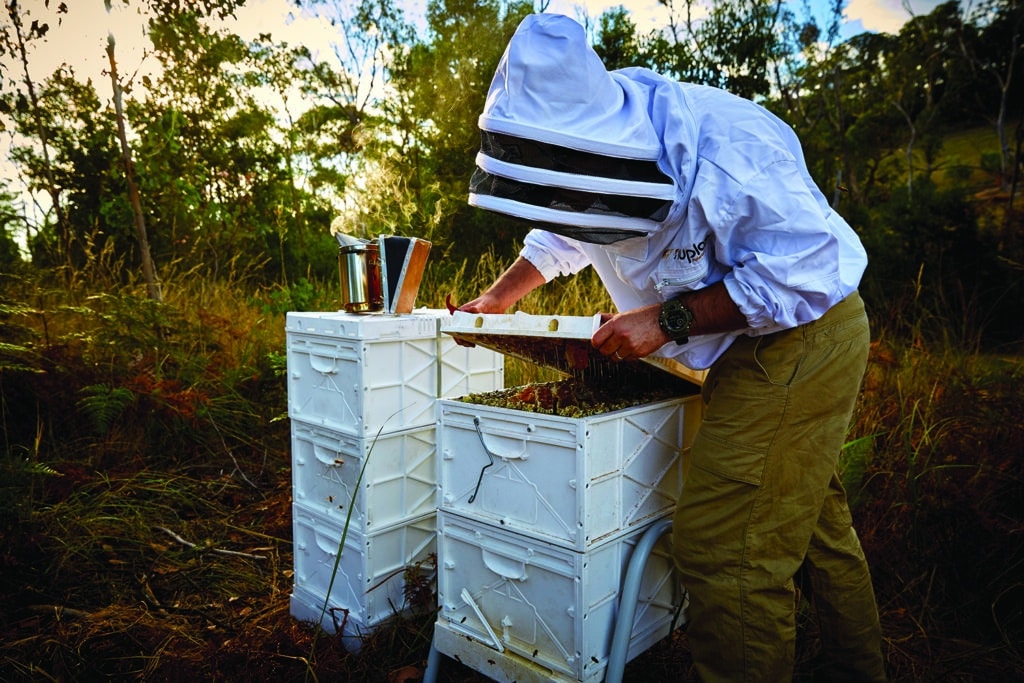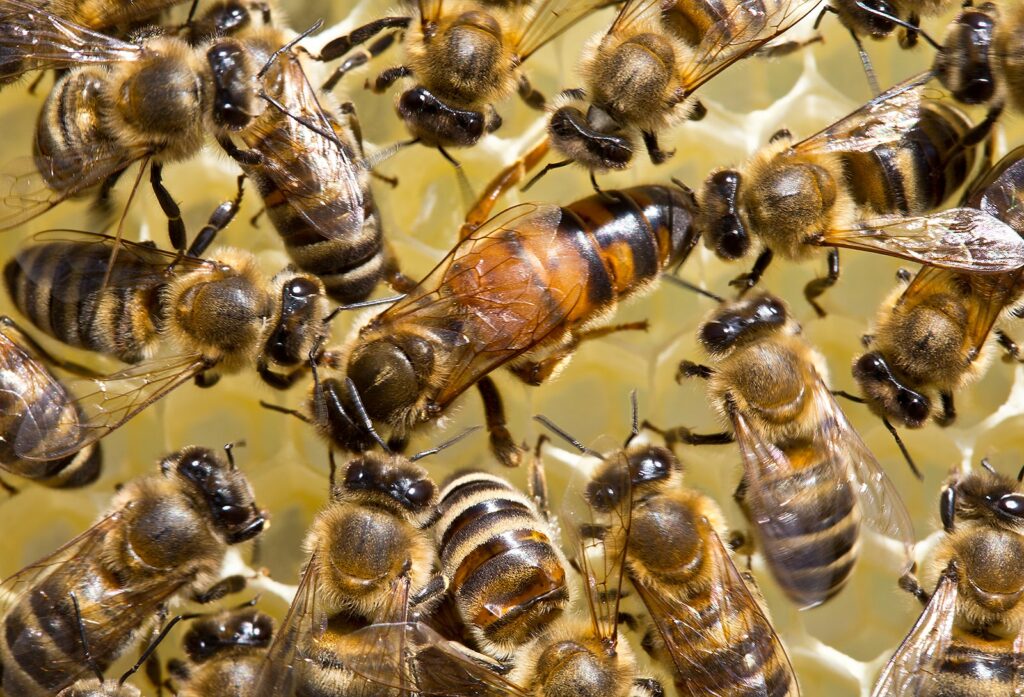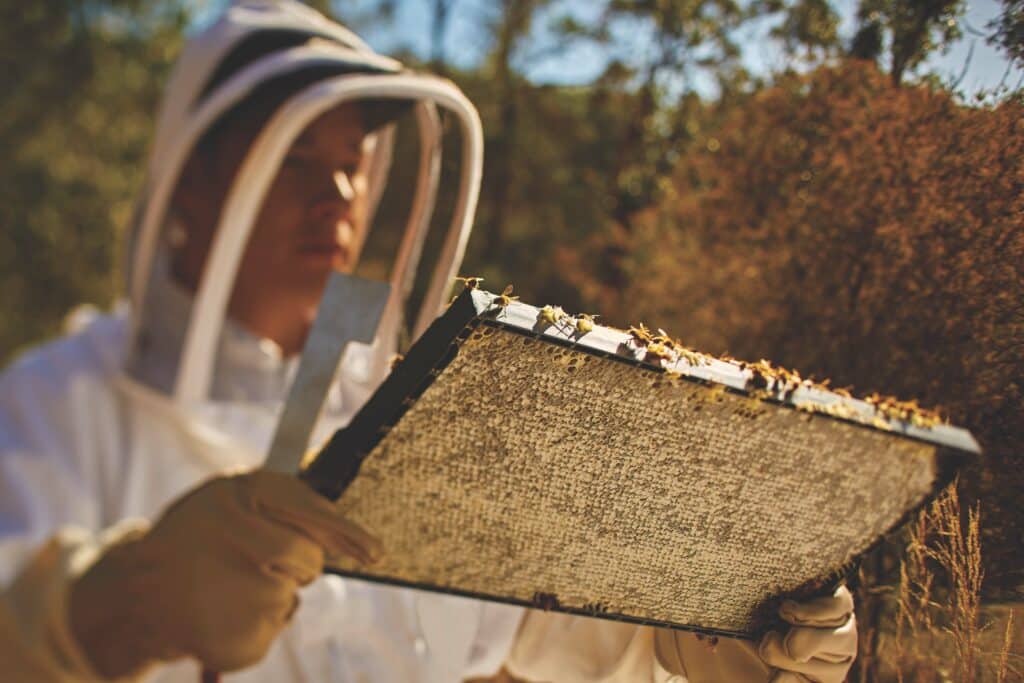The transition from winter to spring is exciting for many reasons. For professional and beginner Apiarists alike, it’s time to ensure your hives are in good condition and you have the right equipment for the upcoming harvest season. Read on for our top tips for better hive health when spring arrives…

Time to Inspect
We recommend reducing hive checks in winter as the low temperature can affect your bees. However, once the weather has warmed up, you can inspect your hives again without risking chilling your brood. A good rule of thumb we advise is that if you have to wear a big winter coat to check on your hive, it is still too cold for your bees. Once you can ditch the coat, it’s time to inspect! We recommend you inspect your hives on a calm day of 15° or warmer.
Things to Look For:
The Queen
Spring is the ideal time for checking on your Queen and measuring her egg-laying output. Some larger operations requeen their hives on a schedule every 12-24 months; however, it is fine to requeen only when necessary.
How Will I Know When to Requeen?
There are a few signs to look for to see if it is time to replace the Queen: if there is poor brood distribution, you find that the workers are laying eggs, the Queen is laying only drones, hive numbers or honey production drop for no apparent reason, if the hive is succumbing to pests or diseases. Or if the bees are chewing her wings as this is their way of saying she needs to be replaced.
There are many options when it comes to replacing your Queen. You can contact a queen breeder for a replacement or try one of our nuc hives to raise your own Queen. Our mating nuc’s come in 2 sizes – our Mini Nuc Mating Hive or the Double Mini Nuc Mating Hive. Our nuc mating hives are also the ideal tool to increase the number of hives in your Apiary.
See our range of Nucs and get the right tools for raising your Queens here.

The Honey Stores
You should check your hive’s honey stores and how much feed your bees have for the coming season. In winter, while the weather is colder and bees cannot forage for enough nectar and pollen, we recommend adding supplemental feed to your hives to ensure their health. It is then desirable to feed again in early spring at a ratio of 1:1 which mimics a honey flow and stimulates the queen to lay. An added bonus of supplemental feed like Hive Alive is that the feed will boost productivity and the general health of your bees through its seaweed, thymol and lemongrass components.
Read more about the proven benefits of Hive Alive here.

Disease
Crucial to your hive’s survival and that of other hives, you must take the appropriate steps to ensure your colony is free of disease and pests. Brood inspections must occur at least twice a year, and spring is the optimal time to conduct them after not inspecting your hives for most of the winter. To inspect your hives accurately, you should aim to check at least 3 frames per hive. Pests and Diseases to look out for are Varroa mite, American Foulbrood disease, European Foulbrood disease and Chalkbrood. We recommend contacting your apiary inspector to ensure you take the proper steps if you find any disease. Once you have begun treating any diseases or infections, we recommend following up with brood inspections every 6 to 8 weeks until two consecutive assessments show no evidence of diseased hives.
Swarming
We also recommend that you inspect your hives to prevent swarming. Hives can swarm when the population exceeds capacity. Swarming generally occurs in spring or summer as the weather warms up and there is more nectar and pollen to collect. To prevent swarming, make sure you have extra honey supers so your colony has room to expand, remove frames full of honey and replace them with empty ones so that your Queen can continue laying eggs, and if you see any swarm cells (oversized vertical cells where larvae are being fed royal jelly) use them to split off a new hive if desired or destroy them to prevent swarming.
Our nuc boxes can also be used in swarm management; see the full range here.
Other supplies and equipment you will need for spring…
Queen Excluders
One of the most crucial pieces in your apiary supplies, a queen excluder works to prevent the Queen from accessing the upper supers and confines her to the brood box. There are multiple benefits to adding a queen excluder to your hive. Primarily for honey production, it ensures you will not have brood in your honey supers. This means frames will be all honey, and you are not wasting time spinning half-full frames. Also, spinning the brood can damage the delicate larvae. A queen excluder also makes locating the Queen much easier, as she will only be found in the brood boxes.
Get the Essentials
Stock up on other beekeeping essentials like PPE, gloves and smokers. You can find them all here.
If you have any questions about your hives and the upcoming season, please get in touch with the team, and we will be more than happy to help you with any questions you may have.
